Thomas Demand explores artistic ownership at Fondazione Prada
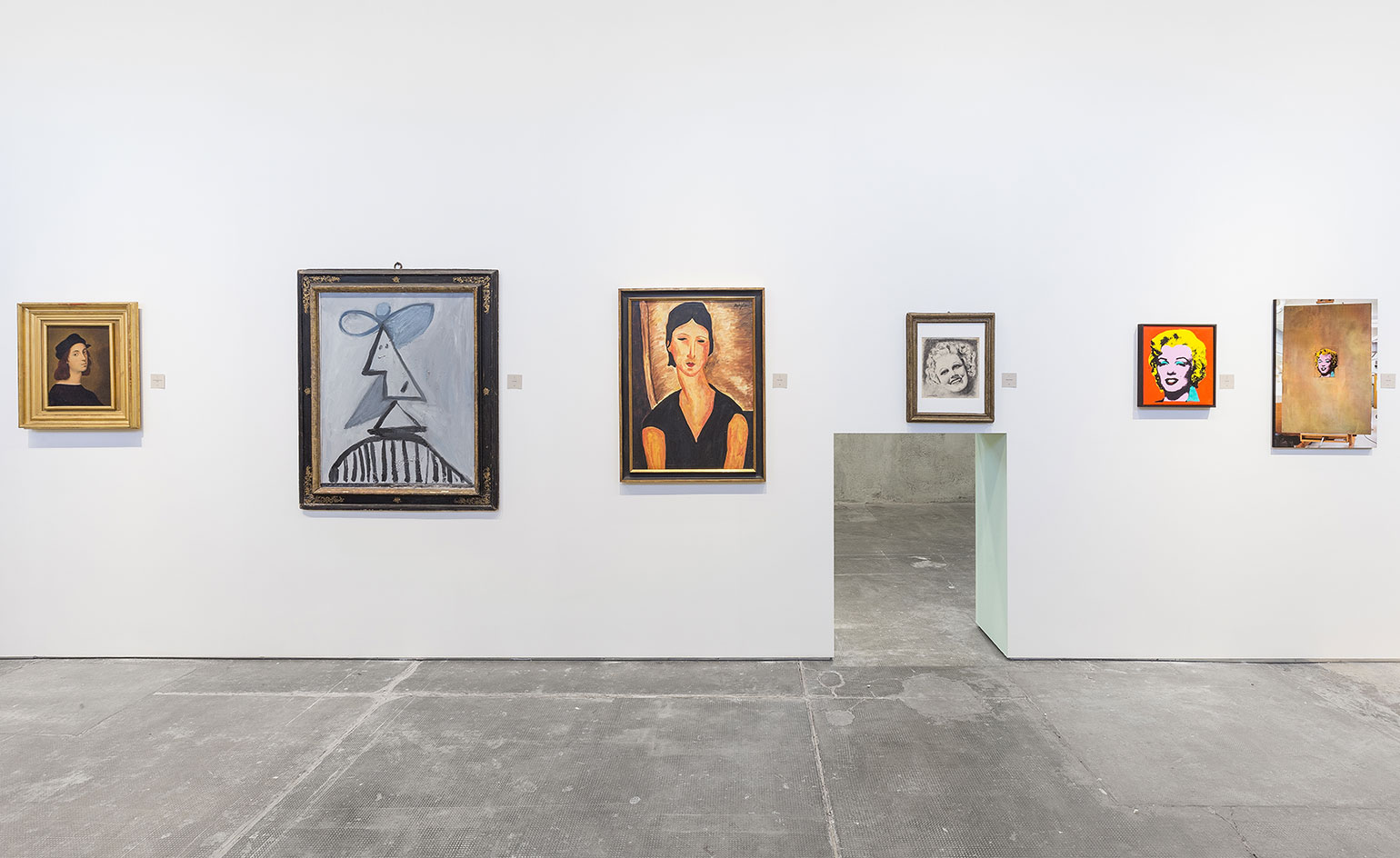
At what point does appropriation become theft? If an act of theft is artistic enough, is it acceptable? Can any art form exist without borrowing from elsewhere?
These are the questions raised by 90 works at a new exhibition curated by Thomas Demand at Fondazione Prada, Milan. The works – dating back to 1820, right up to the present – prove that these questions on authorship, ownership and creativity have a long history in art practice, and with the vast proliferation of free information and images on the net, they’re even more of a preoccupation for artists – and viewers – to address in the present.
Carved into three overarching sections, L’Image Volee (The Stolen Image) deals with the physical and conceptual contemplations of the theme. First off, Demand has pulled together works that explicitly refer to the criminal act of stealing – or that commit a theft in order to make their art. This includes a work by American artist Richard Artschwager (known for his architectural motifs and Formica works). Artschwager commissioned his work – a Persian carpert entitled Stolen Rug, 1969 – to be stolen from the exhibition in which it was to appear in Chicago. Other pieces, such as Richter-Modell (interconti), 1987 – a coffee table made from a Richter painting by Martin Kippenberger – present works literally made from existing art works.
This leads neatly on to artists who re-make other artists’ artwork. Confused? That’s part of the effect of Appropriation Art such as Elaine Sturtevant’s Duchamp Man Ray Portrait, a piece from 1966, which creates a sense of vertigo that is not unlike the feeling of endlessly scrolling on the Internet.
Appropriation is discussed too in the collages of John Stezaker and Wangechi Mutu.
At a certain point, the spectator becomes the spectated. Of the works to watch out for are Baldessari’s Blue Line (Holbein) installation, 1988, fitted with a hidden camera that takes pictures of visitors; and Sophie Calle’s L’Hotel – stealthy shots the artist took of unmade beds and belongings in unoccupied rooms while working as a maid at a hotel in Venice. This section brings the exhibition’s discussion full circle, drawing a parallel between voyeurism and surveillance and the process of observing and making art that is then observed and consumed.

Essentially, the exhibition poses three questions: At what point does appropriation become theft? If an act of theft is artistic enough, is it acceptable? And can any art form exist without borrowing from elsewhere?
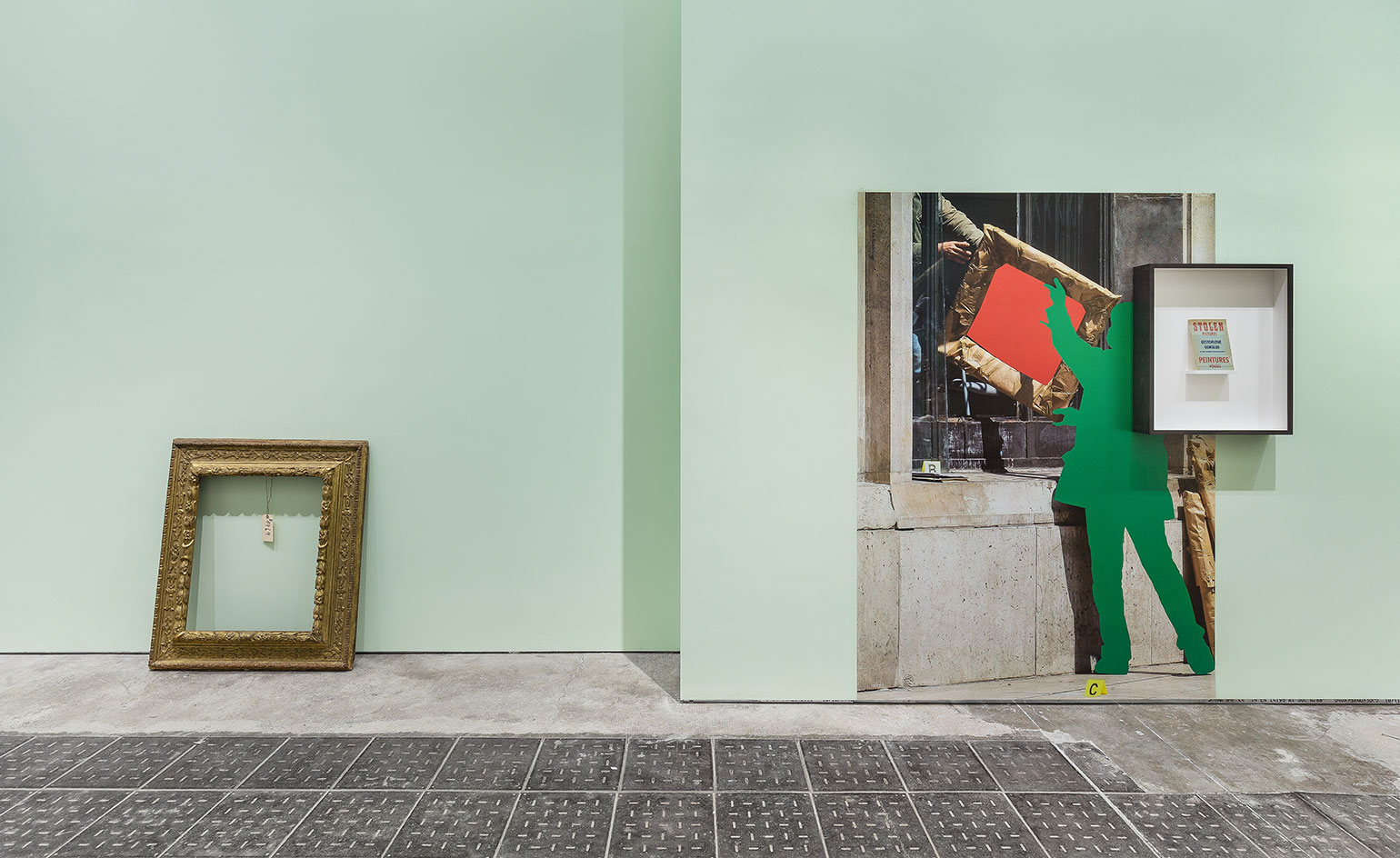
Pictured from left to right: Empty frame of Vincent van Gogh’s Portrait of Dr. Gachet, 1890. John Baldessari's 'L’image volée' poster, 2015 – 2016. Stolen Pictures, 1948 Brochure.
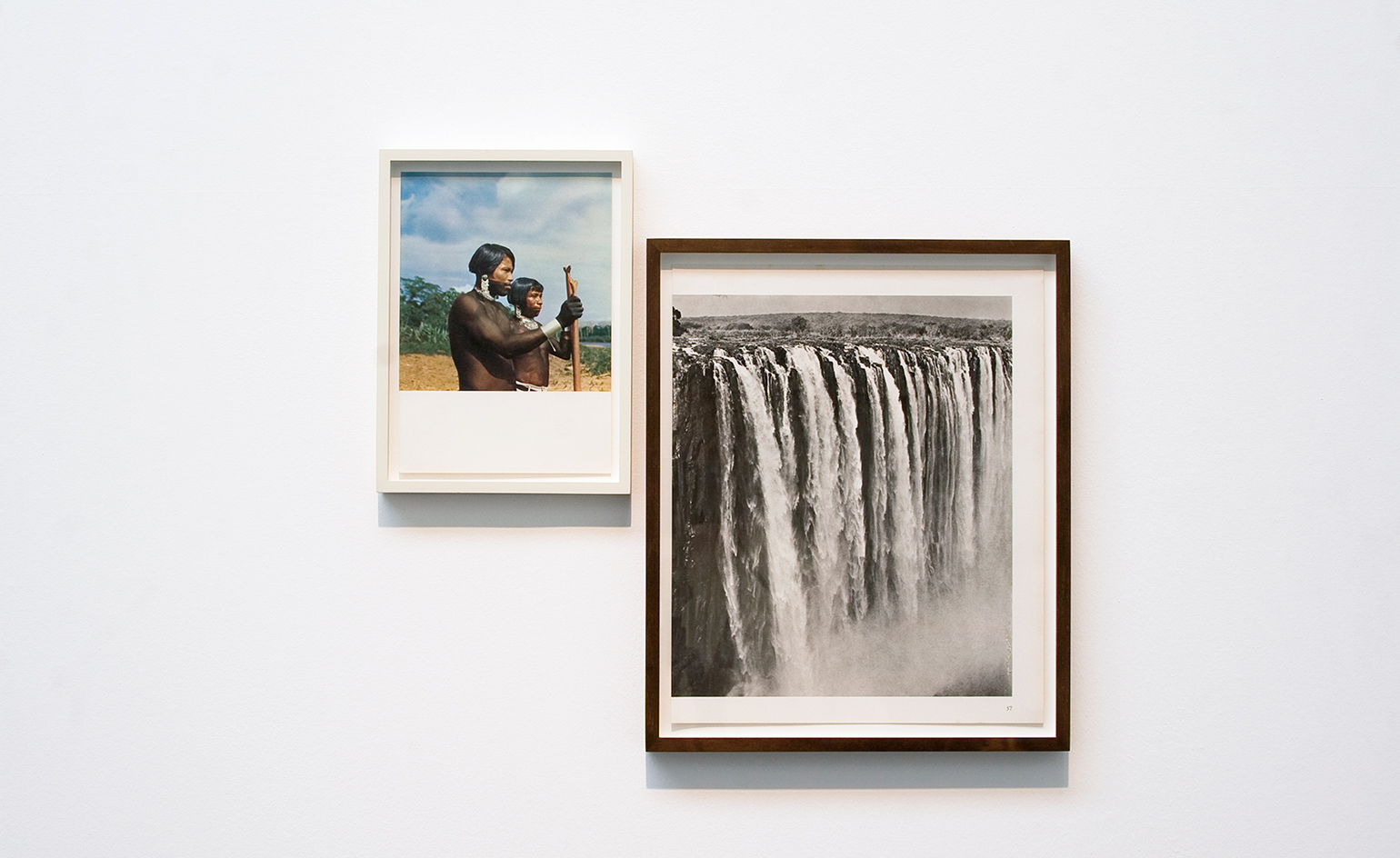
Carved into three overarching sections, L’Image Volee (The Stolen Image) deals with the physical and conceptual contemplations of the theme. Pictured: Untitled #01 t/c, by Haris Epaminonda, 2010.
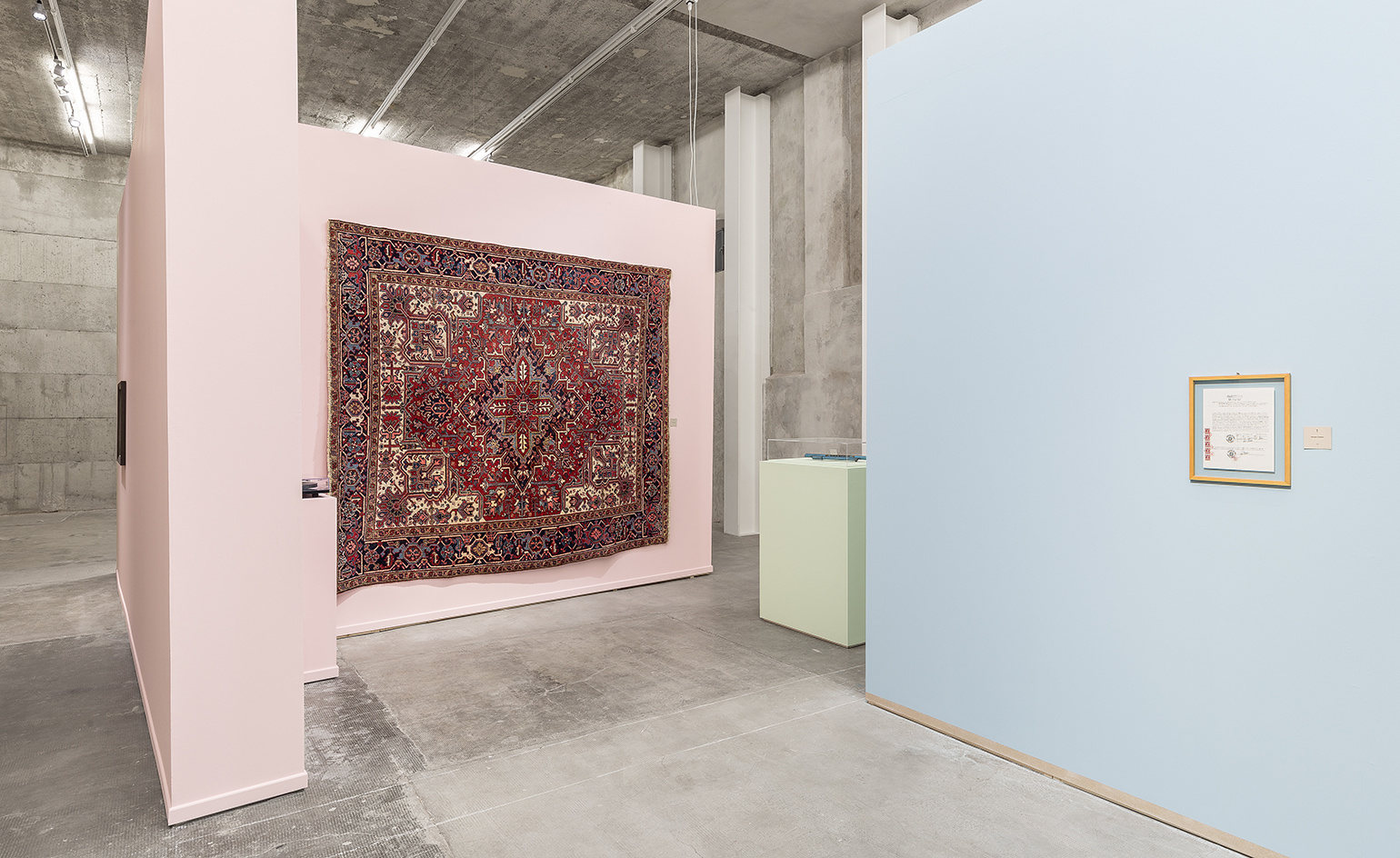
American artist Richard Artschwager commissioned a Persian carpert – entitled Stolen Rug, 1969 (pictured) – to be stolen from the exhibition in which it was to appear in Chicago. Courtesy of Fondazione Prada
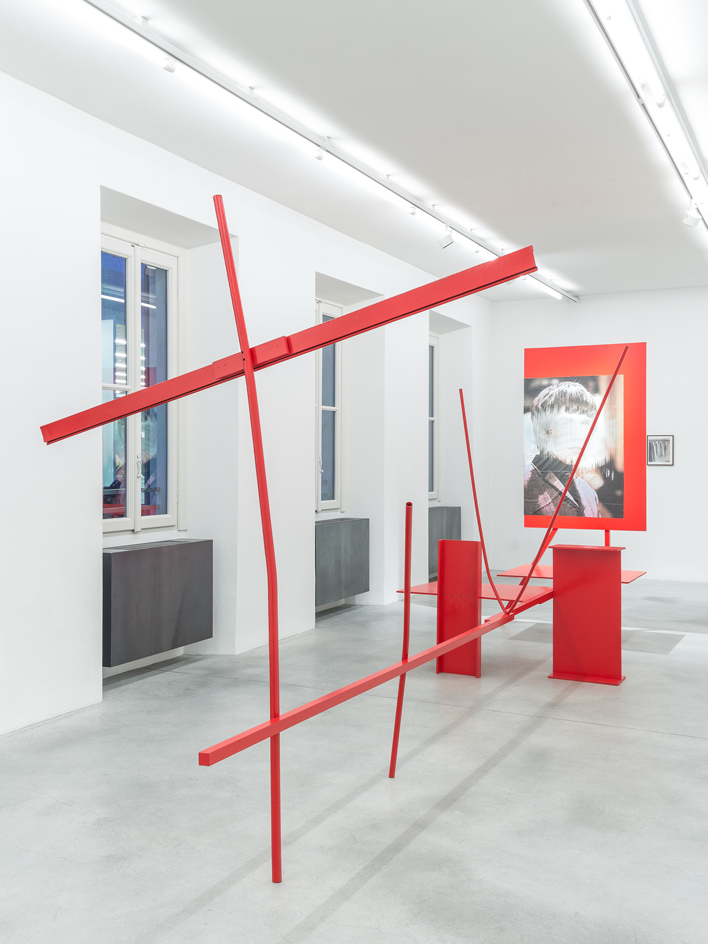
This leads neatly on to artists who re-make other artists’ artwork, aka. Appropriation Art... Pictured: 2 by Henrik Olesen, 2016.
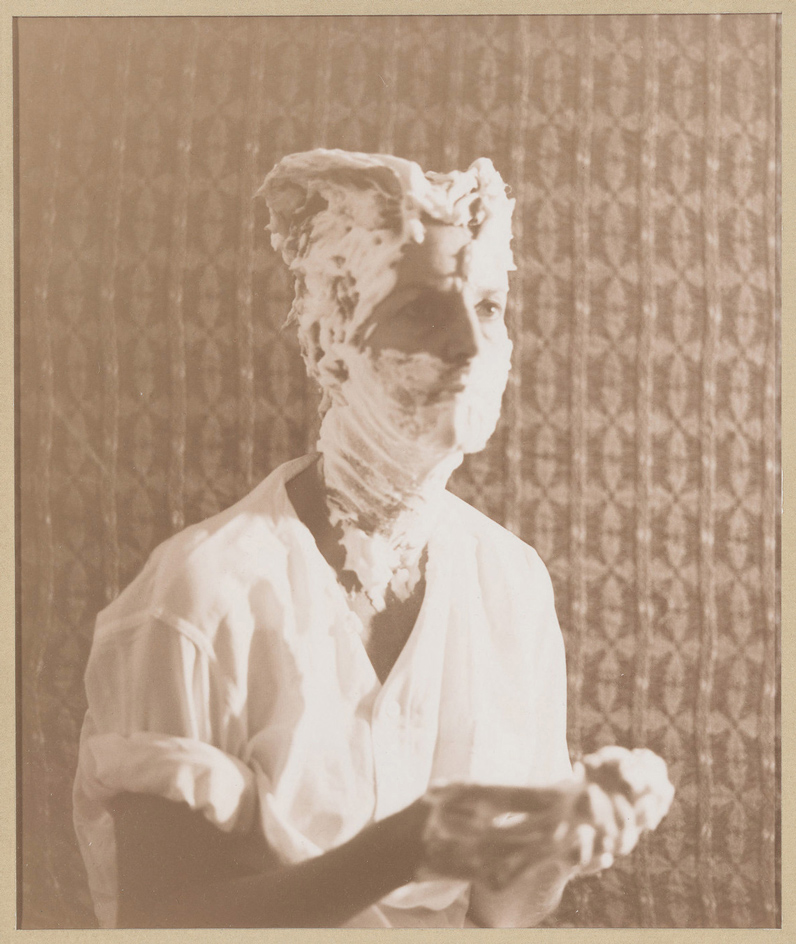
... Like Elaine Sturtevant’s Duchamp Man Ray Portrait (pictured), a piece from 1966, which creates a sense of vertigo that is not unlike the feeling of endlessly scrolling on the Internet.

Appropriation is discussed too in the collages of John Stezaker and Wangechi Mutu. Pictured from left: Oliver Laric's Penelope and Serial Classic.
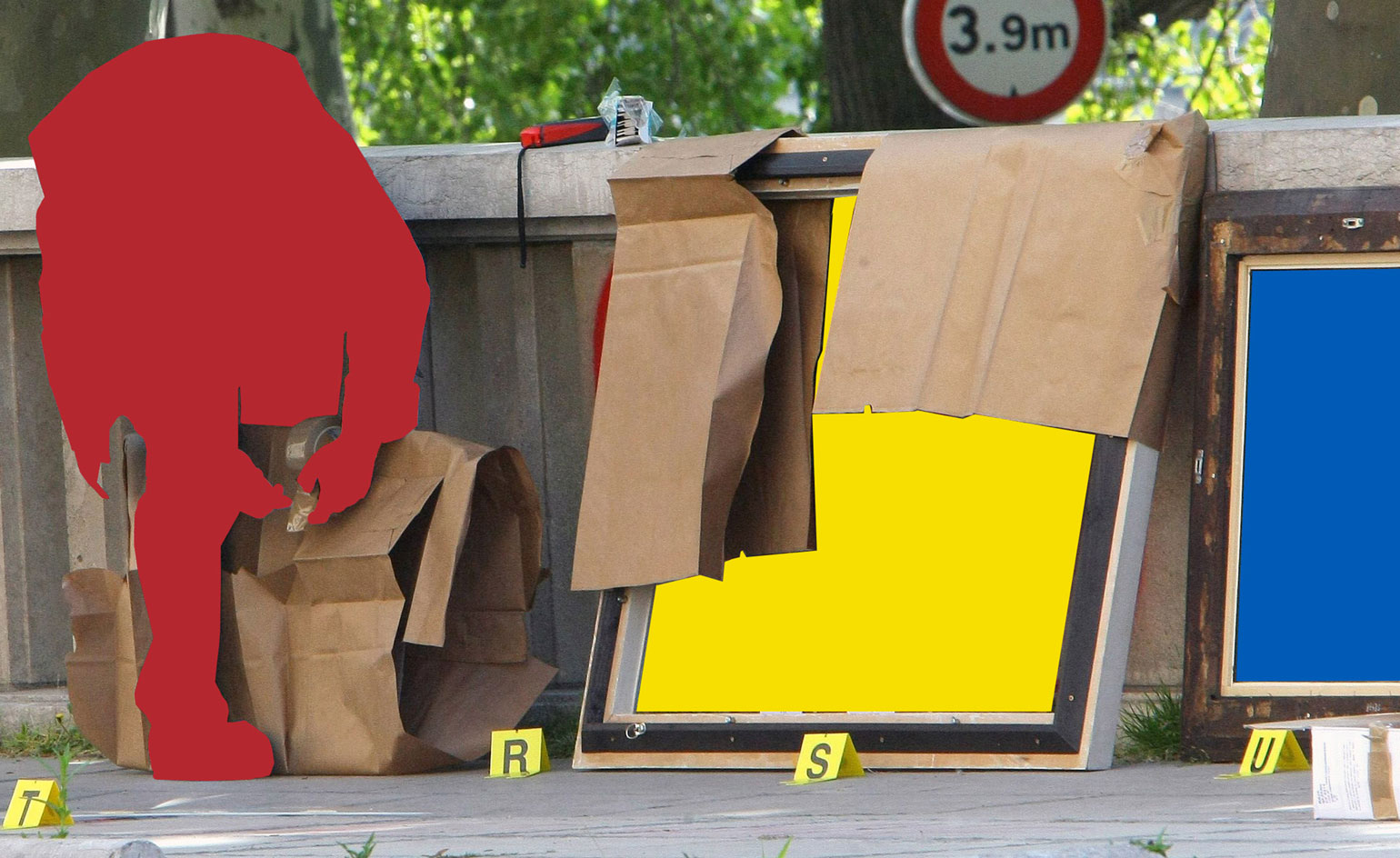
Of the works to watch out for are Baldessari’s Blue Line (Holbein) installation, 1988, fitted with a hidden camera that takes pictures of visitors. Pictured: Poster for the exhibition 'L’image volée' at Fondazione Prada.

At a certain point, the spectator becomes the spectated, as illustrated by this selection of spyware (Soviet and East German spy equipment) from the Wende Museum in Los Angeles.
INFORMATION
For more information, visit the Fondazione Prada website
ADDRESS
Largo Isarco, 2, 20139 Milano, Italy
Receive our daily digest of inspiration, escapism and design stories from around the world direct to your inbox.
Charlotte Jansen is a journalist and the author of two books on photography, Girl on Girl (2017) and Photography Now (2021). She is commissioning editor at Elephant magazine and has written on contemporary art and culture for The Guardian, the Financial Times, ELLE, the British Journal of Photography, Frieze and Artsy. Jansen is also presenter of Dior Talks podcast series, The Female Gaze.
-
 Men’s Fashion Week A/W 2026 is almost here. Here’s what to expect
Men’s Fashion Week A/W 2026 is almost here. Here’s what to expectFrom this season’s roster of Pitti Uomo guest designers to Jonathan Anderson’s sophomore men’s collection at Dior – as well as Véronique Nichanian’s Hermès swansong – everything to look out for at Men’s Fashion Week A/W 2026
-
 The international design fairs shaping 2026
The international design fairs shaping 2026Passports at the ready as Wallpaper* maps out the year’s best design fairs, from established fixtures to new arrivals.
-
 The eight hotly awaited art-venue openings we are most looking forward to in 2026
The eight hotly awaited art-venue openings we are most looking forward to in 2026With major new institutions gearing up to open their doors, it is set to be a big year in the art world. Here is what to look out for
-
 A forgotten history of Italian artists affected by the HIV-AIDS crisis goes on show in Tuscany
A forgotten history of Italian artists affected by the HIV-AIDS crisis goes on show in Tuscany‘Vivono: Art and Feelings, HIV-AIDS in Italy. 1982-1996’, at Centro per l'Arte Contemporanea Luigi Pecci in Prato delves into the conversation around the crisis
-
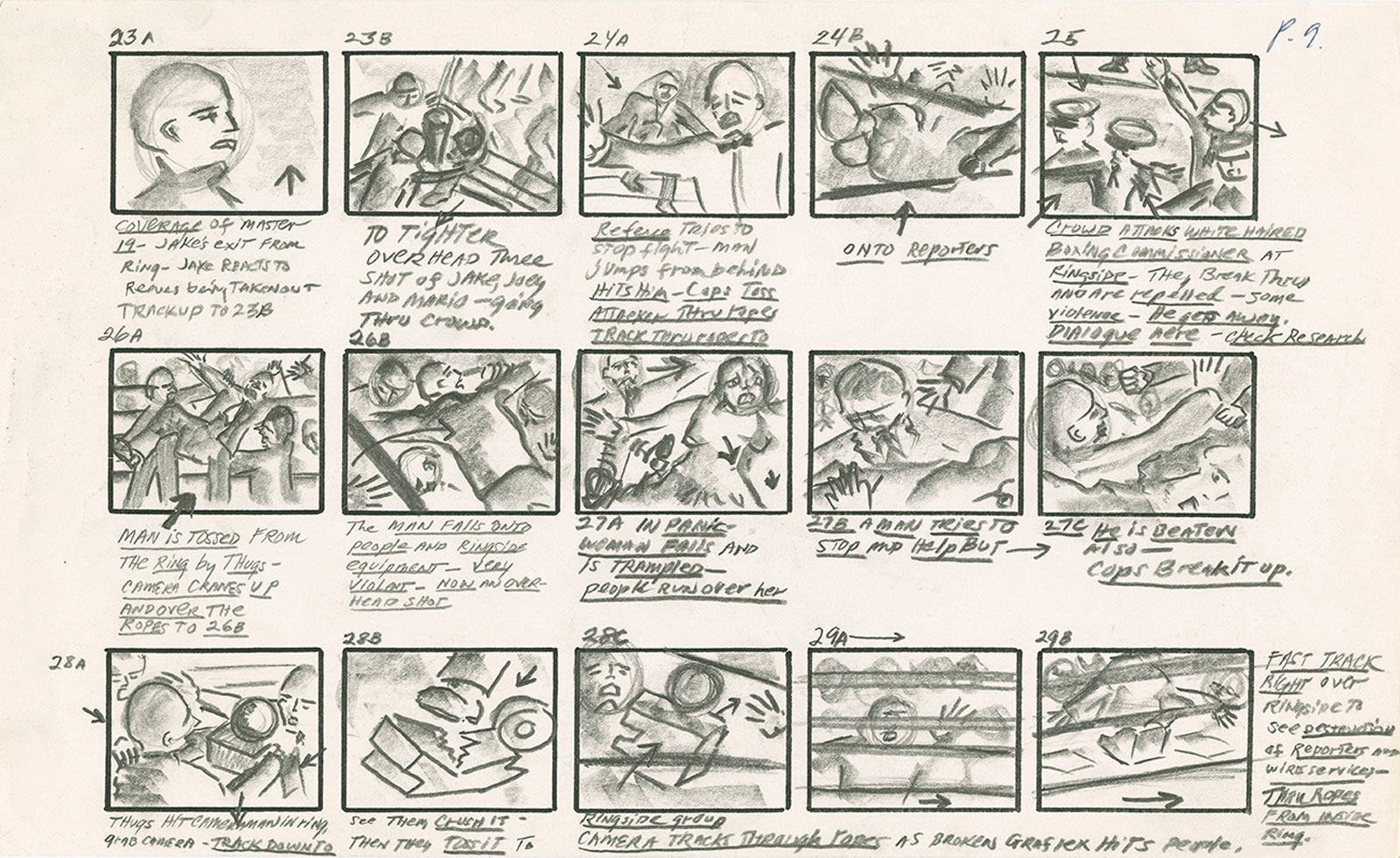 The creative mind at work: a century of storyboarding at Fondazione Prada
The creative mind at work: a century of storyboarding at Fondazione PradaFondazione Prada’s 'Osservatorio, A Kind of Language: Storyboards and Other Renderings' features some of the most celebrated names in cinema working from the late 1920s up to 2024
-
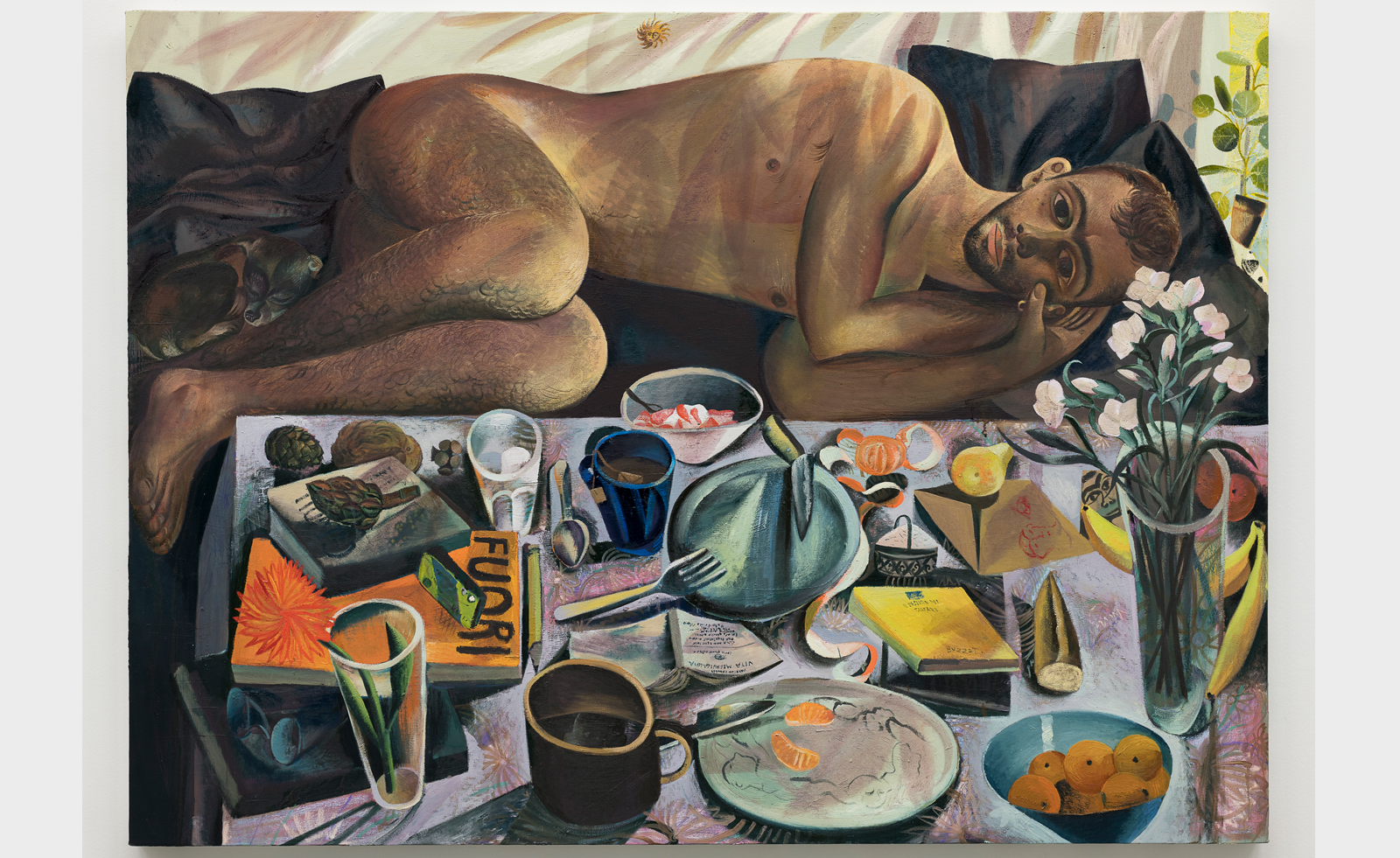 Louis Fratino leans into queer cultural history in Italy
Louis Fratino leans into queer cultural history in ItalyLouis Fratino’s 'Satura', on view at the Centro Pecci in Italy, engages with queer history, Italian landscapes and the body itself
-
 Pino Pascali’s brief and brilliant life celebrated at Fondazione Prada
Pino Pascali’s brief and brilliant life celebrated at Fondazione PradaMilan’s Fondazione Prada honours Italian artist Pino Pascali, dedicating four of its expansive main show spaces to an exhibition of his work
-
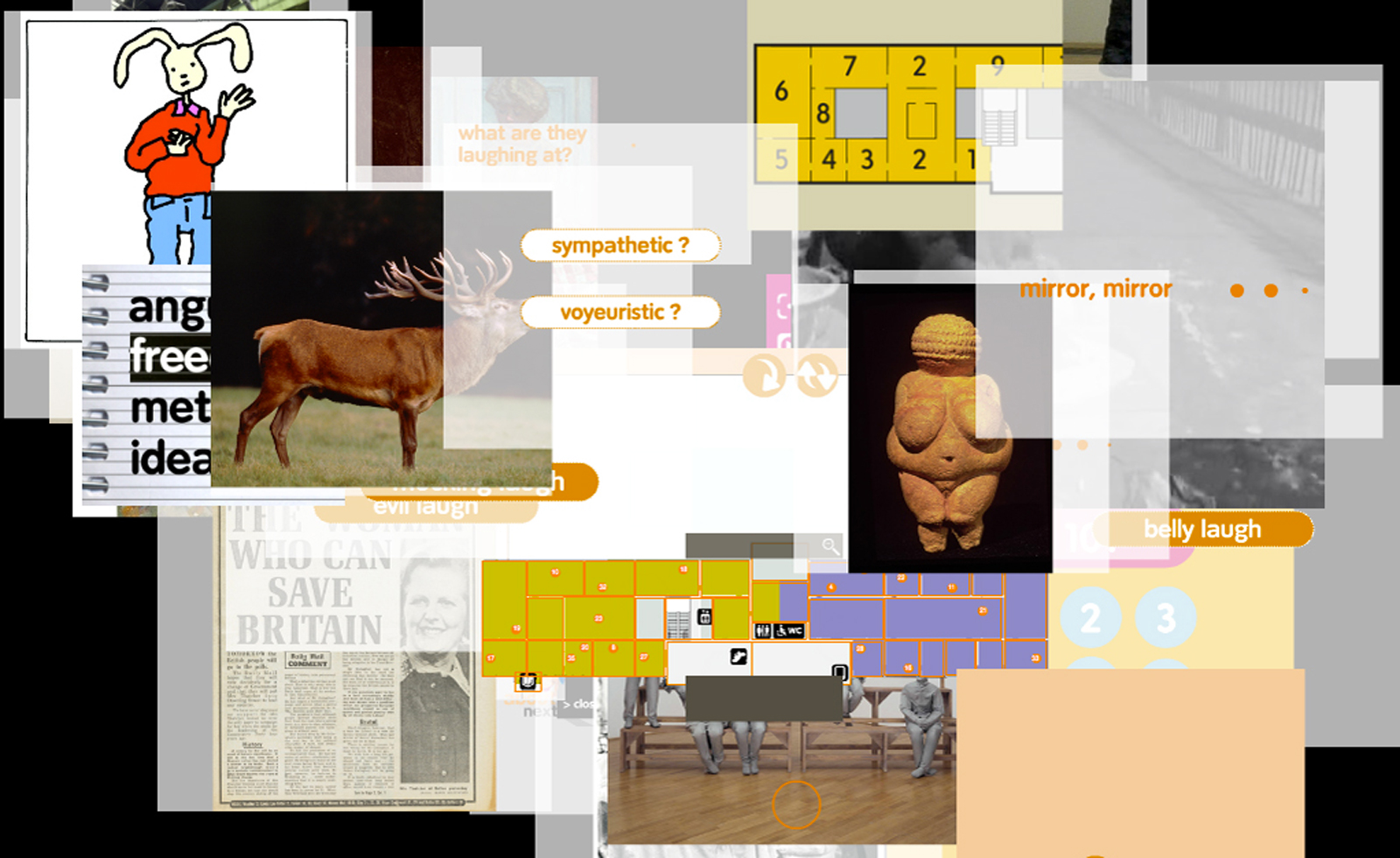 ‘I just don't like eggs!’: Andrea Fraser unpacks the art market
‘I just don't like eggs!’: Andrea Fraser unpacks the art marketArtist Andrea Fraser’s retrospective ‘I just don't like eggs!’ at Fondazione Antonio dalle Nogare, Italy, explores what really makes the art market tick
-
 Miranda July considers fantasy and performance at Fondazione Prada
Miranda July considers fantasy and performance at Fondazione Prada‘Miranda July: New Society’ at Fondazione Prada, Milan, charts 30 years of the artist's career
-
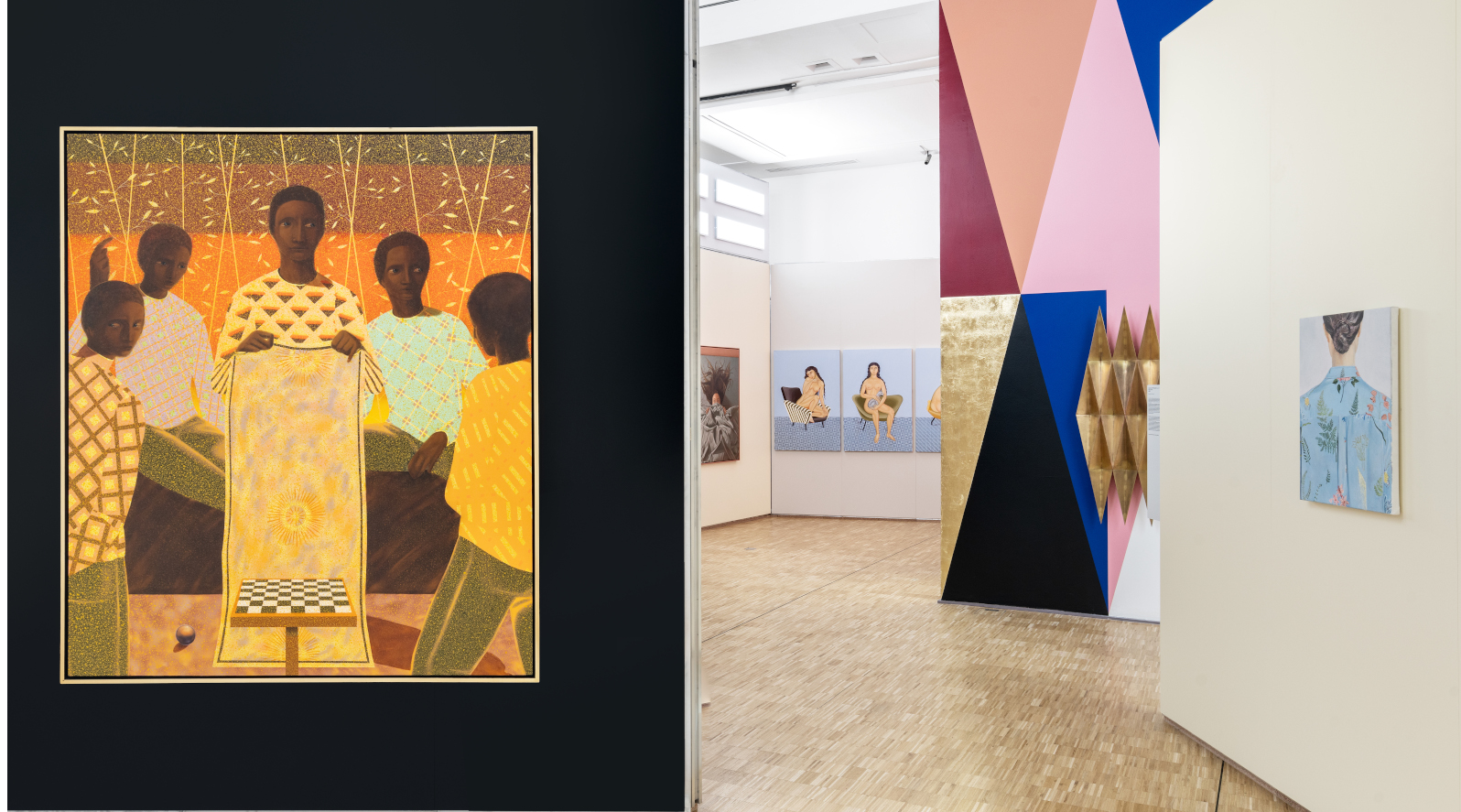 Triennale Milano exhibition spotlights contemporary Italian art
Triennale Milano exhibition spotlights contemporary Italian artThe latest Triennale Milano exhibition, ‘Italian Painting Today’, is a showcase of artworks from the last three years
-
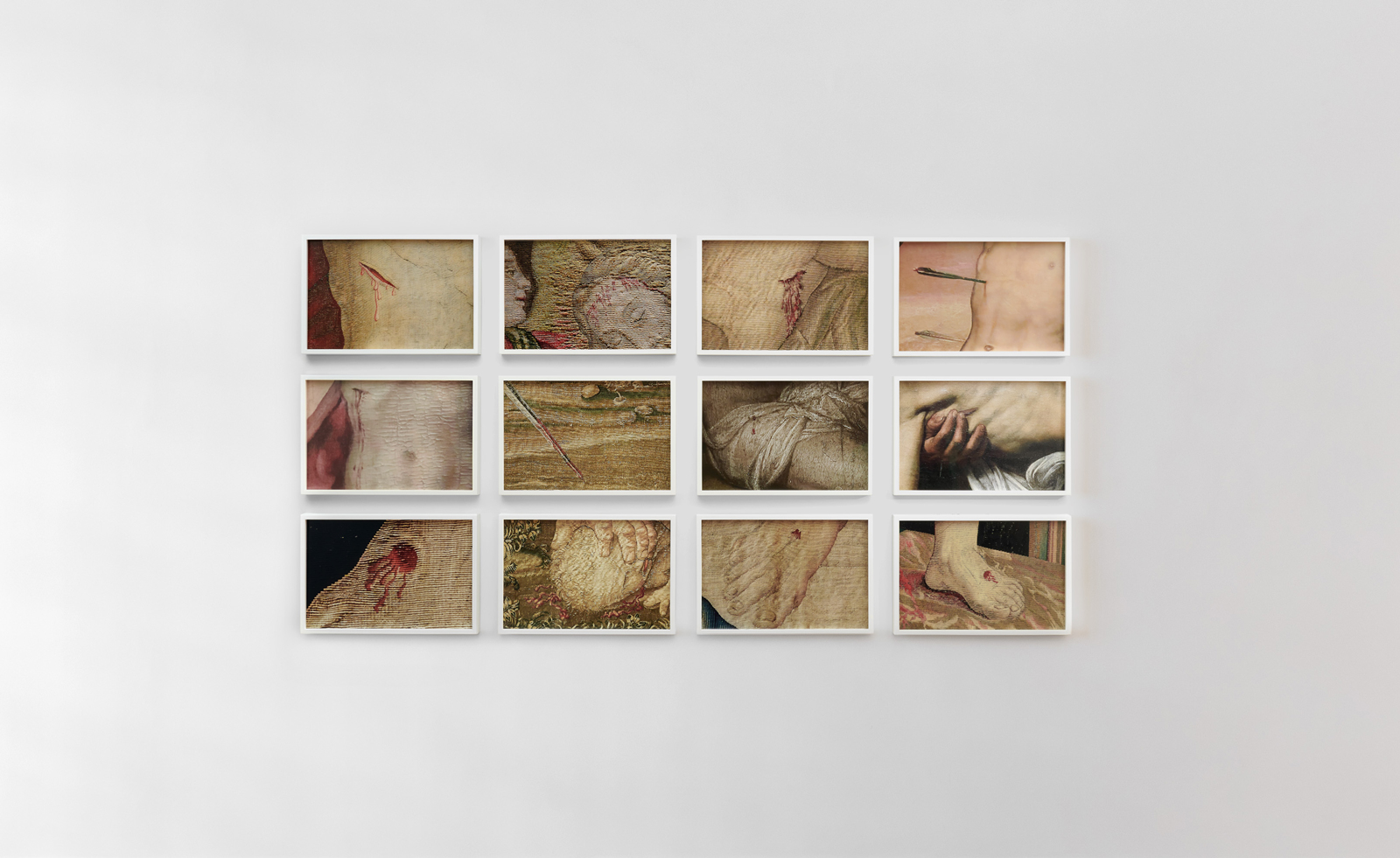 Walls, Windows and Blood: Catherine Opie in Naples
Walls, Windows and Blood: Catherine Opie in NaplesCatherine Opie's new exhibition ‘Walls, Windows and Blood’ is now on view at Thomas Dane Gallery, Naples